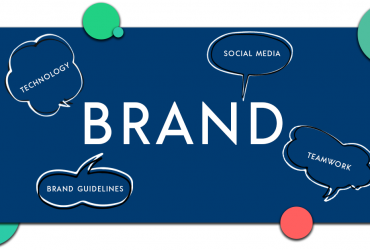Brand Voice: What Is It and Why Does It Matter?
In the cluttered world of social media, distinguishing yourself from the competition is more important than ever. Brands are vying for attention, and your brand voice can help you stand out from the crowd.
Your brand voice complements its visuals, and vice versa. While your logo, images, designs and other visual elements establish how you look, your brand voice uses specific words to convey your personality. Together, your brand voice and visual appearance work to create a brand identity.
Why does brand voice matter? Let’s take a closer look so you can generate a brand voice of your own and appeal to your target customer.
What Is Brand Identity?
Think of your brand identity as the life of the party. In a crowded room, people can easily pick you out — with an easily recognizable appearance and tone of voice.
In other words, your brand identity stands out.
Your brand identity is unique to you. It sets you apart from all the others, like one pink sneaker in a closet filled with brown dress shoes.
It’s what allows your customers to think of you when they’re in the market for your products or services.
What About Brand Voice?
To support this brand identity, your brand voice takes on a personality through its communications. Imagine the same “life of the party” sneaker above opening its mouth and speaking. What words does it say? What type of story does it tell?
The words used in your communications — including your social media posts, emails, blog posts, website copy and ads — complement the visual story you’re telling.
Maybe you are fun, edgy, quirky and lighthearted. Or there might be a need for you to be more professional and subdued.
It all depends on your target customer. But either way, your storytelling should capture their attention. Just because you’re a brown dress shoe doesn’t mean you have to be boring.
Consider Progressive Insurance with its range of quirky commercials. In a crowded, competitive insurance marketplace, the brand manages to make its ads memorable.
There’s Flo, the iconic friendly female character who convinces people to save by switching to Progressive. And there’s Dr. Rick, who reminds people of the need for “unbecoming your parents.”
When you have followers tweeting about your commercials, then you know you’ve established a strong, effective brand voice.
This just made our day!?? https://t.co/0j5PWjWITU
— Progressive (@progressive) August 14, 2020
Why Is Brand Voice Important?
Not only does a distinct brand voice make you memorable, but it also helps to inform every piece of written content. From your social media posts and engagements, to review responses and email campaigns, your brand voice should be infused into everything you publish.
With a consistent brand voice, you become a familiar “friend” to your followers. They know that if they comment on your posts or ask a question, they can expect consistent replies.
It shouldn’t feel like several different people are working on your social media. Even if that’s the case, it should feel like it’s “the brand” responding every time — like one human typing directly to followers.
Here are just a few places where you should have a consistent brand voice:
- Replies to comments on your social media posts
- Responses to direct messages and online reviews
- The stories you tell via social media, i.e., compelling storylines that people will want to follow
- Customer service questions submitted via social media
- Email campaigns and website copy
- Ad copy
Without a distinctive brand voice infused into your content, you risk becoming irrelevant to your followers. They probably will not continue following you if your personality doesn’t shine through on your social profiles — no matter how great your product or service may be.
Read more: 7 Habits of Highly Successful Social Media Marketers
How You Can Develop a Brand Voice of Your Own
If you’re struggling to find your own brand voice, the following tips will get you started.
Create brand guidelines that dictate your brand voice.
These guidelines should include rules on how to present your brand both visually and with tone of voice. A good starting place is your brand’s core values and mission statement.
From those core values and mission statement, pull out some common words and phrases that describe your brand. Think of your brand as a person. What words describe your brand’s personality traits?
Include examples of how to write various pieces of copy within those guidelines. Take five to 10 images, and caption them in your brand voice. This way, anyone who picks up these guidelines (either internally on your team or externally with an agency partner) will be able to understand how to present your brand in words and in visuals.
Look at brands you follow.
You don’t have to look just at competitors’ brands. Look at brands you follow on social media just for the mere fact that you are entertained, inspired or educated by their content.
Jot down the words and phrases that come to mind when you see these posts. Study their content to understand how they pair words and images. How can you emulate their work with your own content?
Create an audience persona.
Who are the people who make up your target audience? Are they younger, older? What kind of language and tone resonates with them? If you were talking to one of these audience members on the phone, what would you say?
Imagine you’re sitting down to coffee with one of them. What topics of conversation would come up? What pop culture or generational references speak to them? Write down personality traits, slang words and vocabulary words associated with your ideal customer.
Know how to adjust your tone for different situations.
The tone you use to address a customer complaint will differ greatly from the tone used to announce a new product. In your brand guidelines, include examples of how to handle different scenarios. Offer guidelines on responding to complaints.
Have a few template-type responses that serve as a starting point for responses. Always tweak these responses to suit the situation! You don’t want to sound like a robot.
Review your brand voice from time to time. As with anything in marketing, it’s important to revisit your brand guidelines and brand voice periodically. This can be done annually or as needed.
For instance, the pandemic or other life-changing events may prompt you to review the ways you interact with customers. By reviewing your brand voice, you can avoid sounding outdated or out of touch.
Give Your Brand Voice the Attention It Needs
By taking the time to develop your brand voice, you’ll have a better grasp of how to approach your social media. You’ll also be able to navigate different scenarios with your audience with a confident, consistent tone.
If you’d like some help in developing your brand voice and presenting it on social media, turn to the experts at Rallio. We’ll be happy to lend a hand.
Read more: Top 9 Social Media Questions, Answered




